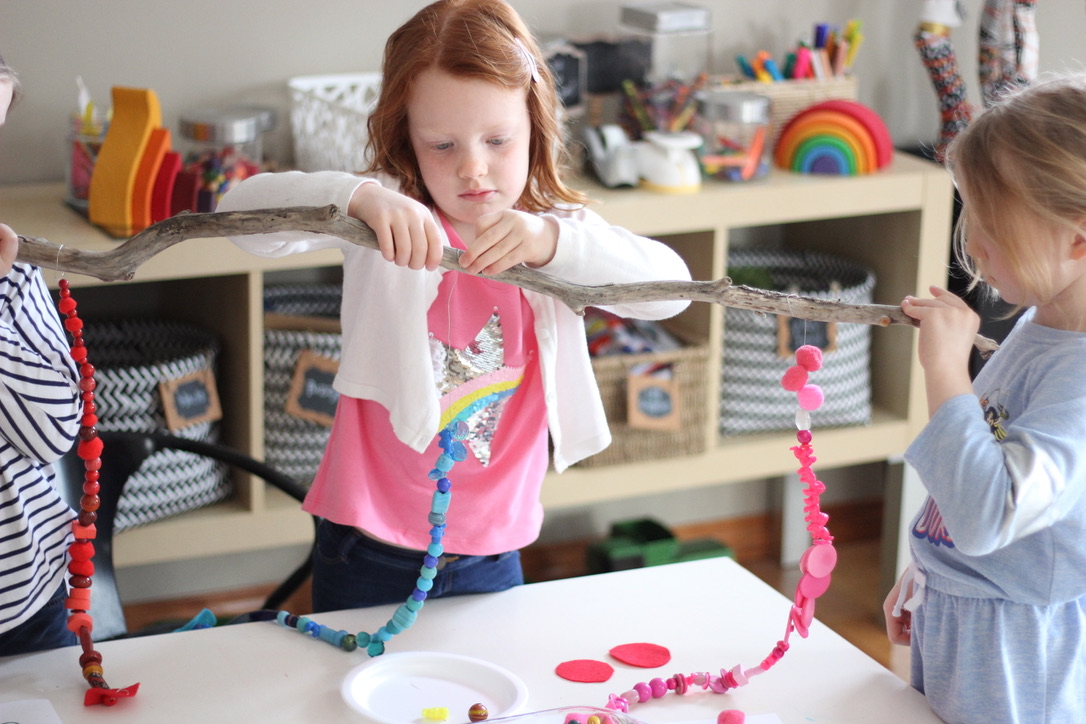Reggio-Inspired Atelier {at Home!}
What is an atelier?
How does the atelier foster our kids' creativity and self expression?
How can we create our own mini-atelier in our own home, and what materials should be included?

In Reggio Emilia, Italy, the atelier is like the beating heart of the classroom.

A dedicated space for art-making, long-term projects and creative exploration through a variety of rich art media, accessible to children to represent their ideas, provoke creative thinking, and show understanding through their one hundred languages.
How might we bring the magic of the Atelier home?
What kinds of tools should we include, and how can they be organized to foster independence and creative exploration for our own children?

Designating a dedicated space for creating sends a message to our children that art is valued, and that they are valued as artists.

This can be a special nook, corner or area of your home, equipped with art media and materials to encourage your child to express their ideas visually - the precursor to reading and writing.

Our children "know more than they can tell," (Polanyi, 1966) and giving them the tools to communicate their thinking - beyond words - allows them to construct meaning and build understanding in non-traditional ways.
In fact, I consider art and play to be a child's first languages.

What kinds of tools should we make available for our children?

Well, this depends on your comfort level. Whatever tools you decide to present, there needs to be teaching, ground rules and expectations set up so that our children can find success (and we don't get frustrated!)
When materials are presented with care and thought, beautifully displayed in glass jars to allow our children to make independent choices, they take care of their environment, respect the materials and aren't inhibited by always having to ask for permission.

I love the idea of combining the atelier with a writing center to encourage our children express themselves visually, and write playfully. Making menus, party invitations, writing "recipes" - these are all integrated into your child's play, and encourage writing for purpose.
 Click to download your own PDF checklist!
Click to download your own PDF checklist!
Here is a list of some of my favorite materials to include in your at-home Atelier:
- paper (lined, white, colorful construction, cardstock) - cut in various sizes
- clipboard
- "fancy" pens (gel pens, novelty pens) to encourage writing
- Washi tape
- plastic tray (for mobile art, and to keep art contained)
- loose parts (crafty, natural, recycled)
- glue (glue stick, white glue)
- markers
- pencil crayons
- pencils
- crayons
- pastels (chalk and oil)
- watercolor paint pods (we love Ooly)
- yarn
- wire
- air-dry clay and clay tools
- alphabet stamps
- envelopes
- Post-It's
- hole punch (bookmaking)
- scissors
- stapler
When it comes to how we organize our supplies and materials, I love the idea of glass jars and baskets - with labels - to help with organization and easy clean-up. For a list of items available at the Dollar Store, be sure to grab my Dollar Store Shopping Guide for some creative storage ideas and inexpensive materials.
Our mini-Atelier need not be fancy or expensive, but by creating a dedicated space that is inviting, organized and equipped with rich materials and media, our children are free to express themselves in ways that go beyond paper-pencil, stretching their creativity and imagination.
P.S.
Are you homeschooling this fall? Looking for a creative, Early Years curriculum that captures your child's hundred languages to learn important academics like reading, writing, math and more? Join the waitlist! Doors open again soon!



